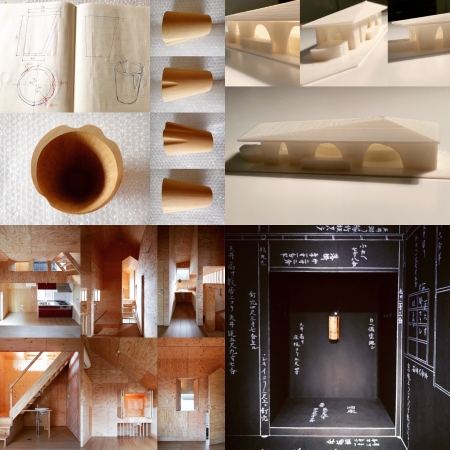つくり方の前提に対して
建築とは内部に空隙があり、そこに人が滞在できる程の大きさがあるものだと定義してみる。
内部の空隙を何かでいっぱいに満たせば、空隙ではなくなるから、それは建築にはならない。しかし、最初は空隙があったのだから、はじめは建築だった。
その満たす何かが空気ならば以前として建築である。ならば、いっぱいに満たすものしだいで建築かどうかが決まり、建築ではないのに建築になる状態をつくれるかもしれない。空隙をつくり、またそこを何かで埋める、埋めるものしだいで建築か建築じゃないかが決まる。
例えば、すぐ壊せるもので埋めてしまい、必要に応じて後で空隙をつくる。建築→建築じゃない→建築と変化した時に空間の見え方に何か変化が起こるだろうか。建築のつくり方の前提に対する疑問である。
"For the premise of how to make"
Let's define architecture as something that has a void inside and is large enough for people to stay there.
If you fill the internal void with something, it will not be an architecture because it will not be a void. However, at first there was a gap, so it was architecture at first.
If something that fills it is air, it is still architecture. Then, depending on what is filled up, it may be decided whether or not it is an architecture, and it may be possible to create a state where it becomes an architecture even though it is not an architecture. It is decided whether it is architecture or not depending on what creates a gap and fills it with something.
For example, fill it with something that can be broken immediately, and create a gap later if necessary. Will there be any change in the appearance of space when it changes from architecture to not architecture to architecture? It is a question about the premise of how to make architecture.


